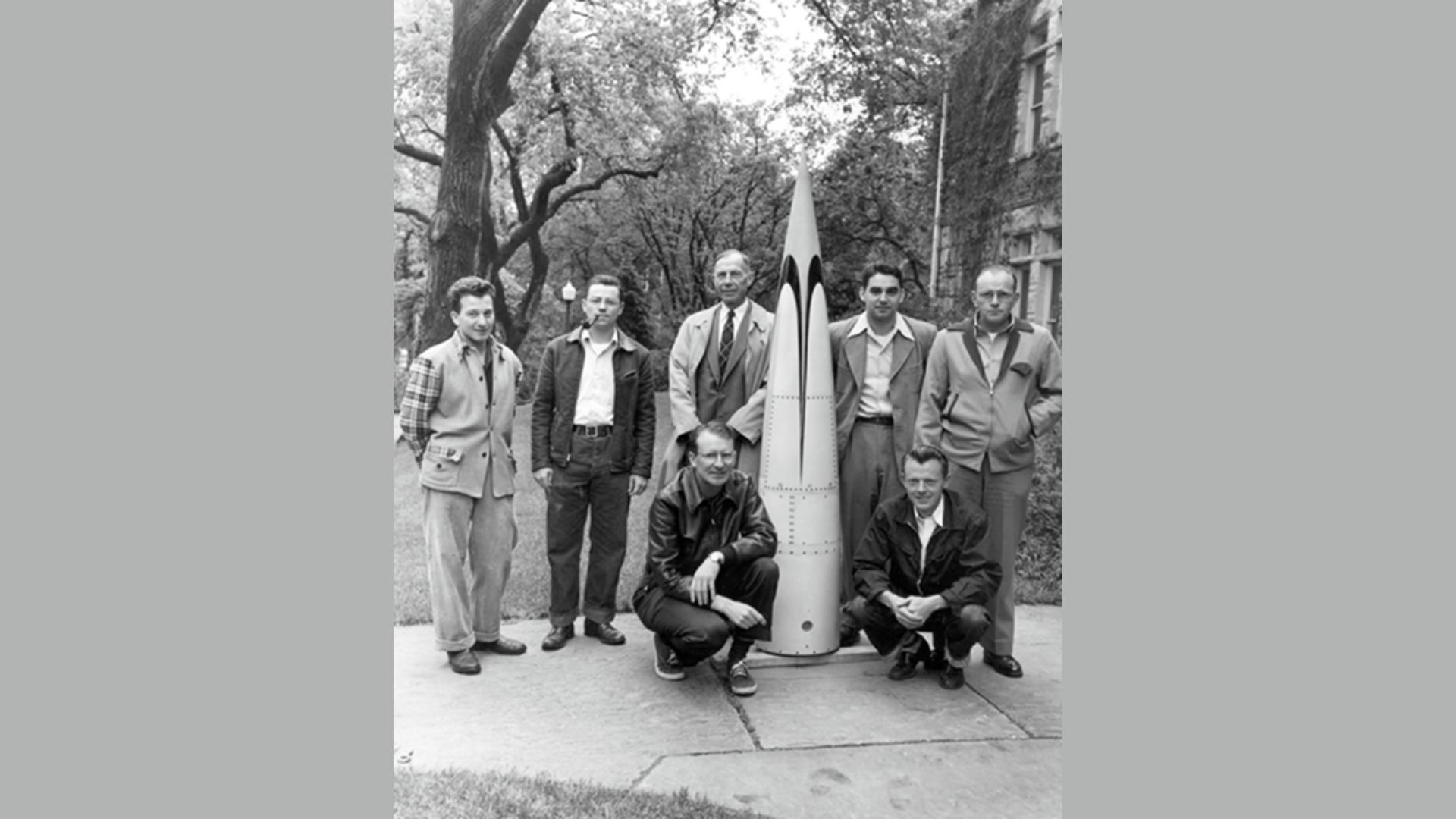
In 1948, the Laboratory for Atmospheric and Space Physics (LASP) at the University of Colorado Boulder began launching surplus World War II rockets above Earth’s atmosphere with instrument to study the Sun, helping to launch the exploration of space–and demonstrating the value of using sounding rockets for science.
Today, as LASP celebrates the 75th anniversary of its founding, a LASP-convened session explores the present and future of sounding rocket science at the American Geophysical Union 2023 meeting in San Francisco. The session conveners LASP Director of Science, Frank Eparvier, and LASP graduate student Vicki Herde, who is a student/early career convener.
Sounding rockets have been key to many areas of scientific research from atmospheric science to solar and space physics, astronomy, planetary and exoplanetary sciences, and even biology. In fact, much of what is now considered commonplace knowledge in heliophysics and astrophysics was discovered through the use of sounding rockets. Early scientific sounding rocket programs following World War II led to the formation of research groups at universities, industry, and government labs and the foundation of NASA itself. Sounding rockets are vital to the development and testing of technologies and methodologies used in satellite and deep space missions. In addition, sounding rocket programs have trained, and continue to train the next generation of scientists and engineers who go on to play vital roles in larger space missions. Sounding rockets also enable new, smaller institutions to start an instrument program, thus increasing the opportunities for diversity and growth in space research. This session solicits presentations on the past, present, and future roles and uses of sounding rockets in scientific research, education, and diversity.
Talks: Sounding Rocket Platforms for Enabling Exploration and Discovery: The Past, Present, and Future of Space Research I Oral | Monday, Dec. 11, 10:20-11:50am PST | 208 – South (Level 2, South, MC)
The session will include seven talks:
Poster Session: Sounding Rocket Platforms for Enabling Exploration and Discovery: The Past, Present, and Future of Space Research II Poster Session | Monday, Dec. 11, 14:10 – 18:30 PST | Poster Hall A-C – South (Exhibition Level, South, MC)
Founded a decade before NASA, the Laboratory for Atmospheric and Space Physics at the University of Colorado Boulder is on a mission to transform human understanding of the cosmos by pioneering new technologies and approaches to space science. LASP is the only academic research institute in the world to have sent instruments to every planet in our solar system. LASP began celebrating its 75th anniversary in April 2023.



